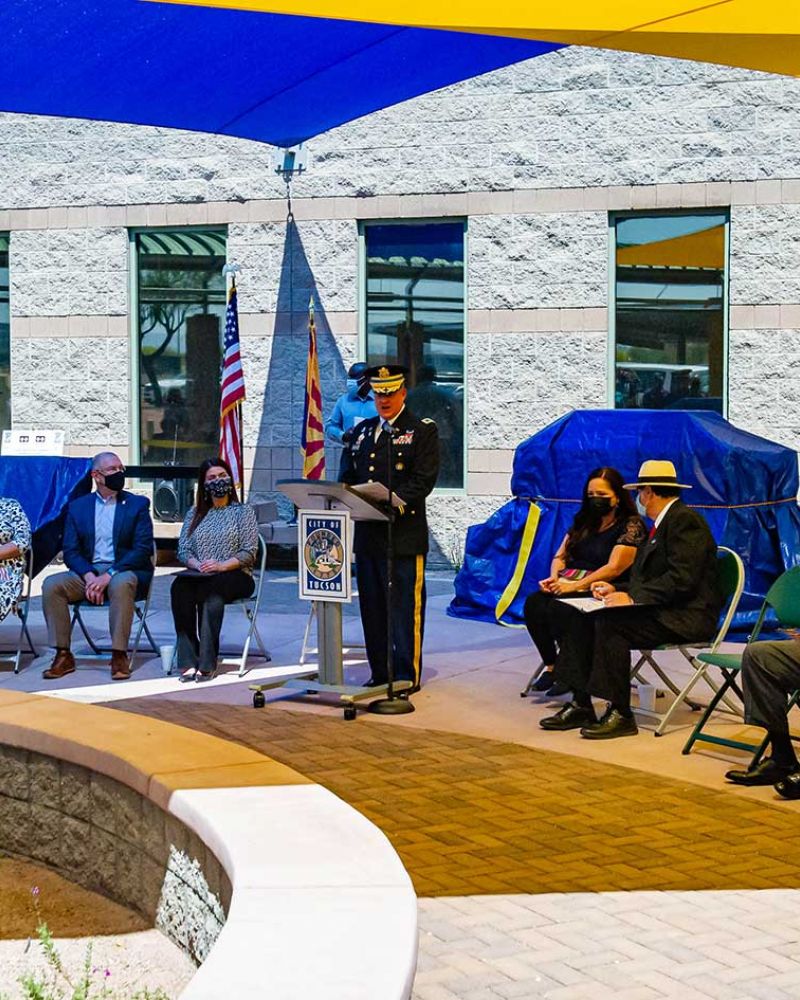Buffalo Soldiers
The United States Congress allowed Black Americans to serve for the first time (Negroes or Colored was the term used) in the US Army after passing legislation in 1866, at Fort Leavenworth, Kansas, during peacetime. Six units were created, two would be Calvary, and four were set up as infantry regiments. The two Calvary units were designated as the 9th and 10th US Calvary. The US Infantry, activated in July 1886, was known as the 38th, 39th, 40th, 41st regiments. Later, the four infantry regiments became the 24th and 25th regiments.
With all Black men who primarily were enlisted men, the remainder of the regiments were former slaves and Civil War veterans. The US Colored Troops, formerly the Civil War Troops, were no more, so many joined the newly created infantry. Even with some of the Black Soldiers having the experience, they were commanded by all-white officers.
Origin of The Name
These Black Soldiers of these newly organized units ended up fighting primarily Indigenous Native Americans and protecting the border for New Mexico and Arizona. Soon they were being called Buffalo Soldiers. The term “Buffalo Soldiers” supposedly came from Native American Tribes, possibly the Cheyenne warriors as they referred to the bushy hair of Black Soldiers they were fighting. The Apache adopted the same term, Buffalo Soldier, because they felt their hair matched the Bison. Eventually, all the Black Soldiers who were a part of the legislation establishing the Black 1866 Army were called “Buffalo Soldiers.”
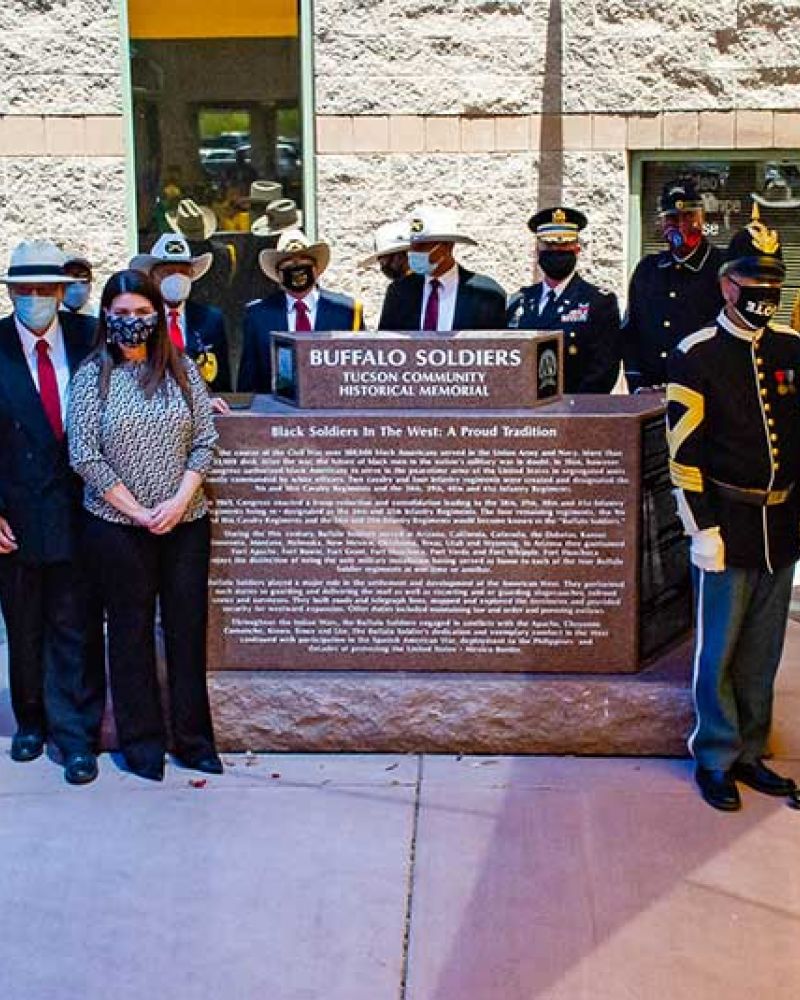
Photo by Joe Jackson
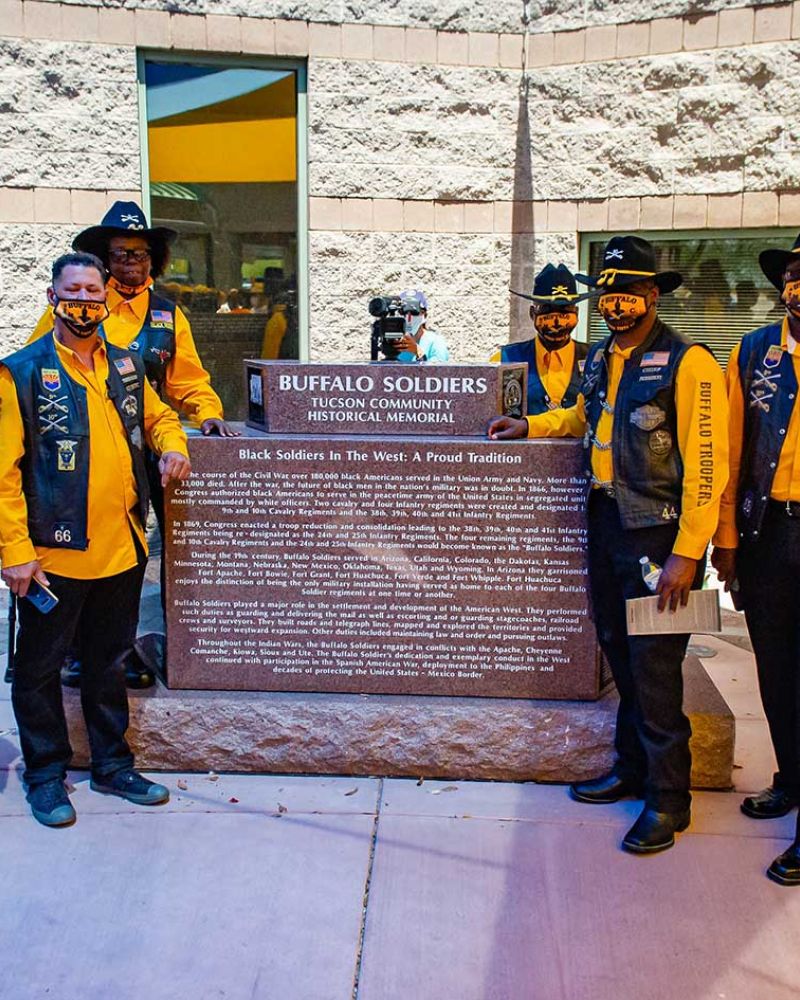
Photo by Joe Jackson
The Journey
As the troops moved west, many units settled at Ft. Bowie and Ft. Huachuca in Arizona in the late 1880s. These soldiers were instrumental in moving New Mexico and Arizona into statehood (both in 1912). Some of the troops moved north toward Wyoming and fought in wars with primarily Native Americans. These soldiers were exposed to the elements and not only battled at war but were in a battle of unfavorable living conditions, racial prejudices, and unfair and often dangerous assignments. It did not stop these brave men.
Most of the Indian Wars ended by the late 1890s, but the Buffalo Soldiers endured and were moved to assist Cuba with the Spanish – American War. More Black men enlisted from various states, and some of the regiments had Black officers. Some of the troops became “Park Rangers” and assisted with protecting many of what is now known as our National Parks. There were no national parks at this time. National Parks were established in August of 1916. Buffalo Soldiers protected settlers moving west with pioneer wagons trains, stagecoaches carrying food and goods, and telegraph lines. After fighting the Native Americans, they eventually were asked to protect Native American reservations and bring peace to multiple cities where there was unrest.
The Impact
Corporal Isaiah Mays and Sergeant Benjamin Brown were awarded the Medal of Honor for their protection and defense of the Wham Paymaster stage in February 1890 near Fort Grant, Arizona. They were among twenty-three Buffalo Soldiers to receive America’s highest honor.
When Pancho Villa led an attack on Columbus, NM, in 1916, Buffalo Soldiers under Major Charles Young, a Black Officer, were asked to assist. The “Punitive Expedition of 1916” was led by Buffalo Soldiers as Pancho Villa escaped back into Mexico.
President Harry Truman dismantled the Buffalo Soldier units in 1948 by Executive Order. This order enforced military branches to allow all American men to serve with equal treatment of any man who was a uniformed soldier.
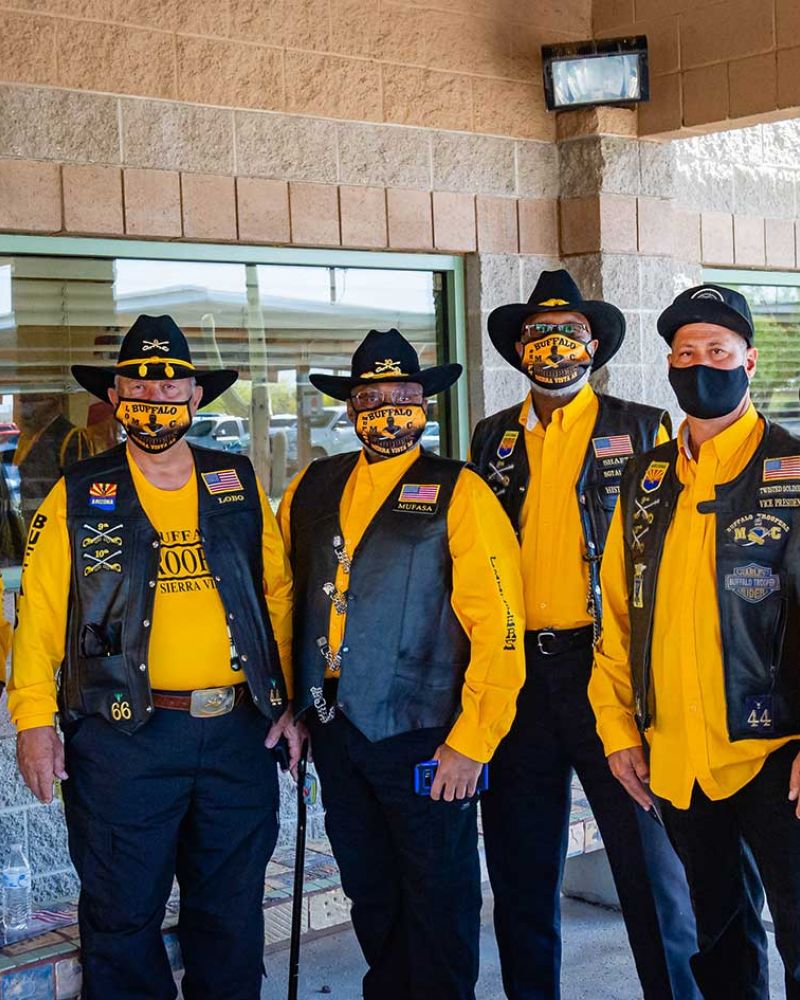
Photo by Joe Jackson
500 Years
Of Black History in Southern Arizona
Featuring Dr. Michael Engs, Charles Hancock, Andre Newman
With permission from Nina Shelton/ Producer, Special Projects Arizona Public Media
Feb 26, 2018 / Arizona Illustrated / Arizona Public Media
*Also, please visit the Buffalo Soldier Memorial in Tucson, Arizona at the Quincie Douglas Center.
American Heroes… Patriots!
The United States Congress allowed African Americans to serve for the first time (Negroes or Colored was the term used) in the US Army after passing legislation in 1866, at Fort Leavenworth, Kansas, during peacetime. Six units were created, two would be Calvary, and four were set up as infantry regiments. The two Calvary units were designated as the 9th and 10th US Calvary. The US Infantry, activated in July 1886, was known as the 38th, 39th, 40th, 41st regiments. Later, the four infantry regiments became the 24th and 25th regiments.
With all African American men who primarily were enlisted men, the remainder of the regiments were former slaves and Civil War veterans. The US Colored Troops, formerly the Civil War Troops, were no more, so many joined the newly created infantry. Even with some of these African American Soldiers having the experience, they were commanded by all-white officers.
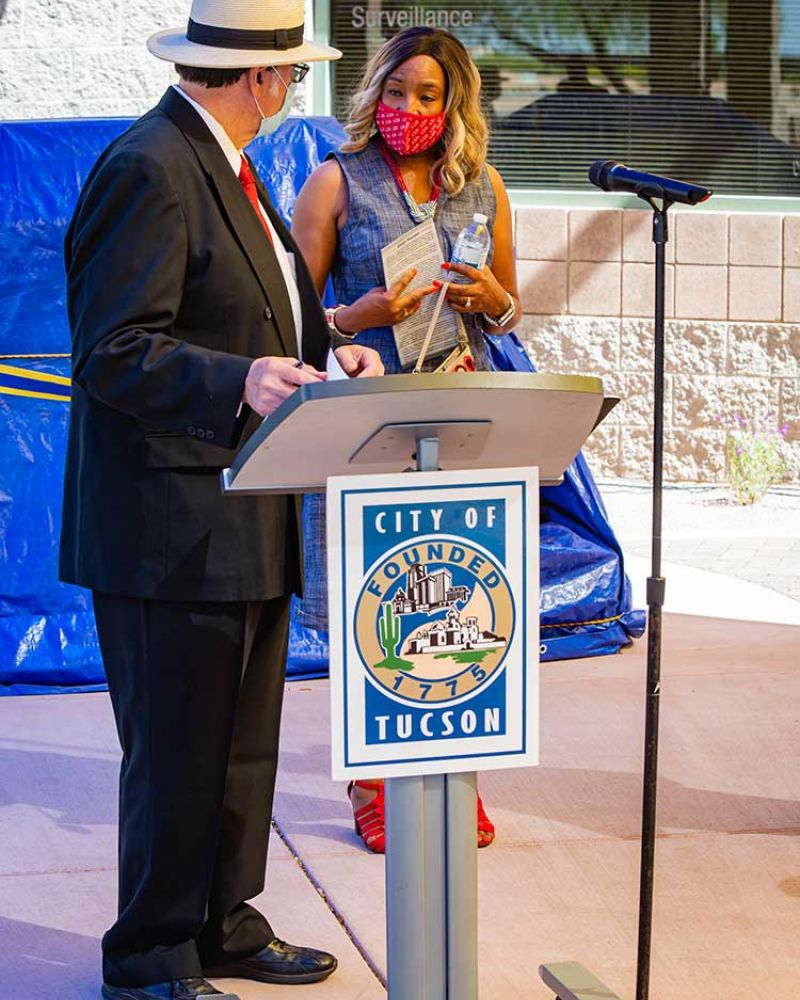
Photo by Joe Jackson
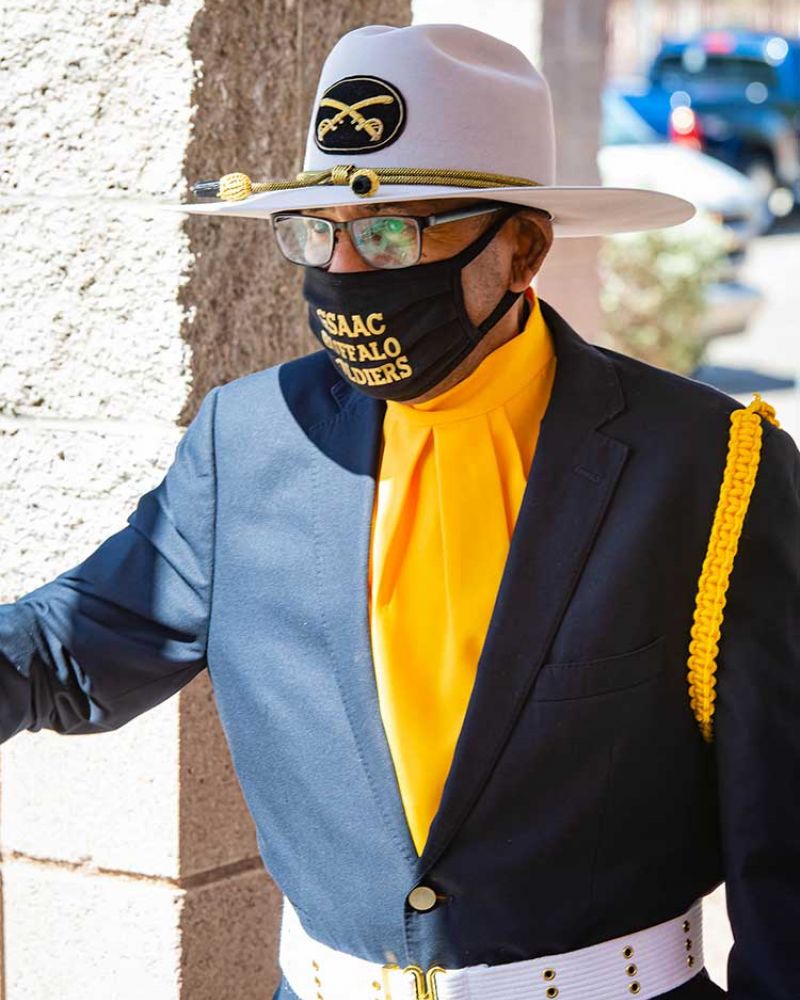
Photo by Joe Jackson
These African American Soldiers of these newly organized units ended up fighting primarily renegades and hostile Indigenous/Native Americans and protecting the border for New Mexico and Arizona. Soon they were being called Buffalo Soldiers. The term “Buffalo Soldiers” reportedly came from Native American Tribes, possibly the Cheyenne Warriors as they referred to the bushy hair of Black Soldiers they were fighting. The Apache adopted the same term, Buffalo Soldier, because they felt their hair matched the Bison. Eventually, all the African American Soldiers who were a part of the legislation establishing the Negro 1866 Army were called “Buffalo Soldiers.”
As the troops moved west, many units settled at Ft. Bowie and Ft. Huachuca in Arizona in the late 1880s. These soldiers were instrumental in moving New Mexico and Arizona into statehood (both in 1912). Some of the troops moved north toward Wyoming and fought in wars with primarily Native Americans. These soldiers were exposed to the elements and not only battled at war but were in a battle of unfavorable living conditions, racial prejudices, and unfair and often dangerous assignments. It did not stop these brave American men.
Most of the Indian Wars ended by the late 1890s, but the Buffalo Soldiers endured and were moved to assist Teddy Roosevelt and the Rough Riders in the battle of San Juan in the Spanish-American War.
More African American men enlisted from various states, and some of the regiments had African American officers. Some of the troops became “Park Rangers” and assisted with protecting many of what is now known as our National Parks. There were no national parks at this time. National Parks were established in August of 1916. Buffalo Soldiers protected settlers moving west with pioneer wagons trains, stagecoaches carrying food and goods, and telegraph lines. After fighting our Indigenous Americans, they eventually were asked to protect Native American reservations and bring peace to multiple cities where there was unrest.
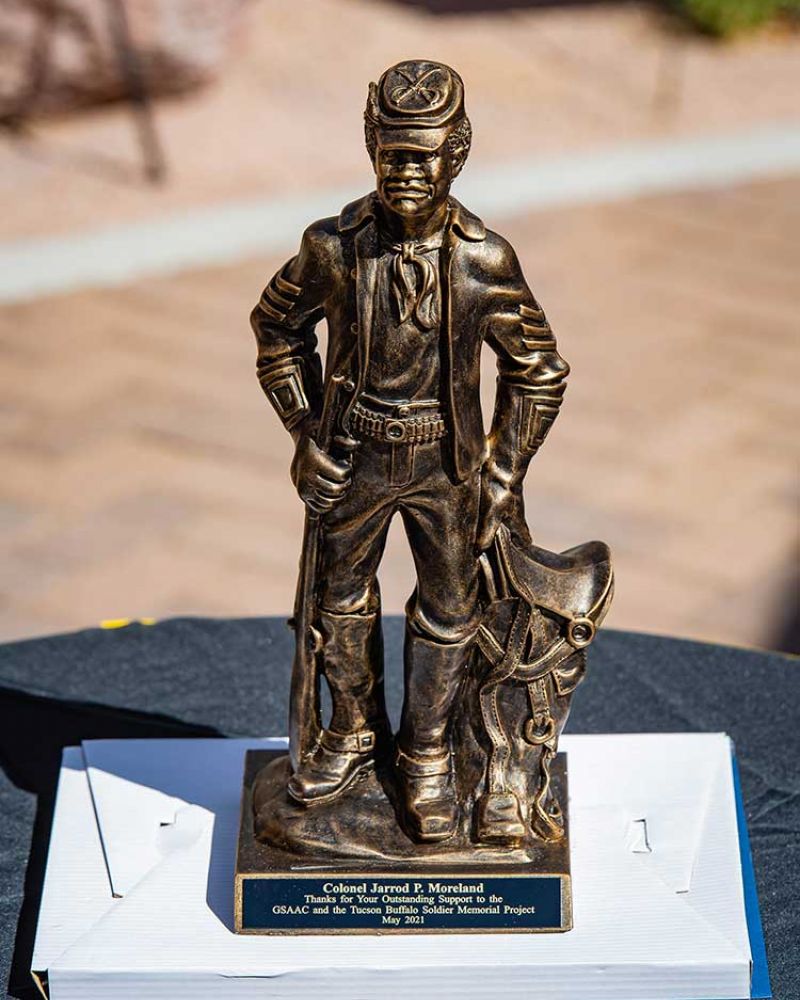
Photo by Joe Jackson
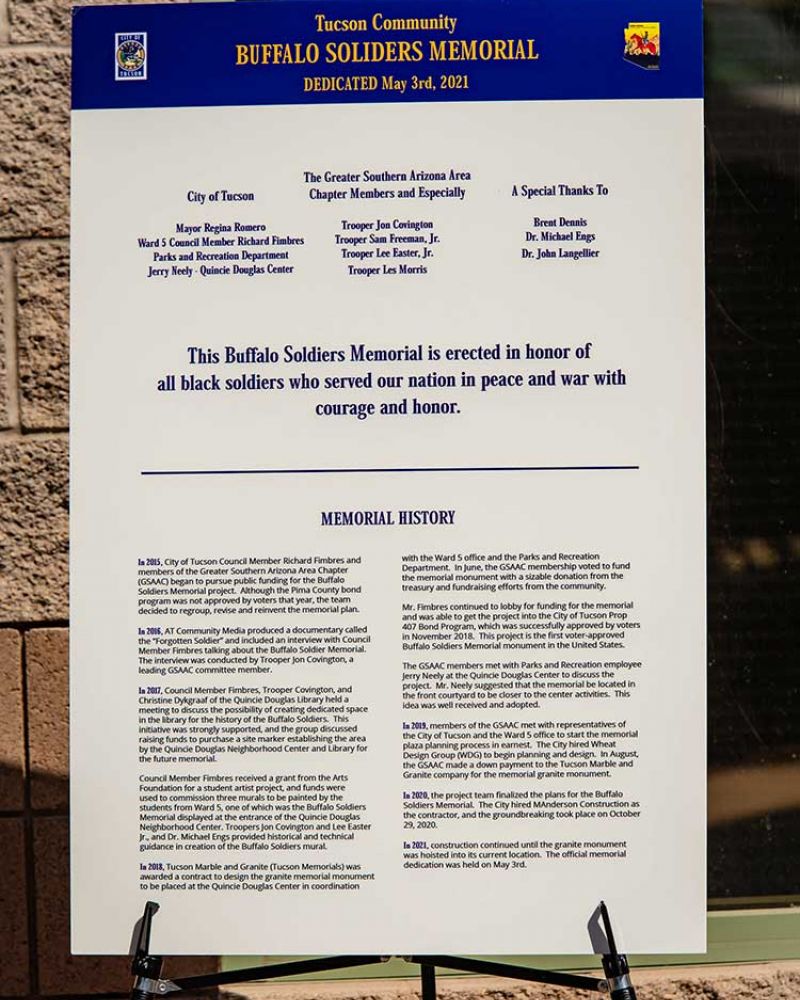
Photo by Joe Jackson
Corporal Isaiah Mays and Sergeant Benjamin Brown were awarded the Medal of Honor for their protection and defense of the Wham Paymaster robbery in February 1890 near Fort Grant, Arizona. They were among twenty-three Buffalo Soldiers to receive America’s highest honor.
When Pancho Villa led an attack on Columbus, NM, in 1916, Buffalo Soldiers under Major Charles Young, a Black Officer, were asked to assist. The “Punitive Expedition of 1916” was led by Buffalo Soldiers as Pancho Villa escaped back into Mexico.
President Harry Truman dismantled the Buffalo Soldier units in 1948 by Executive Order. This order enforced military branches to allow all American men to serve with equal treatment of any man who was a uniformed soldier.

Resources
Tucson Buffalo Soldier Memorial Website
City of Tucson / News Announcement
Tucson / Buffalo Soldiers Memorial Plaza Dedication
Tucson / Buffalo Soldier Photos of the Memorial Dedication
Buffalo Soldier Memorial Project Overview
Website by AAMSAZ
Logo Design by Felicia Penza -feliciapenza@gmail.com
Please note: No photos and no videos.

Site
Museum Location
-
Museum is located on the Campus of the University of Arizona
Student Union Room 244(1303 E University Blvd, Tucson, AZ 85719)
Park in the 2nd Street Garage
-
Museum is located on the Campus
of the University of Arizona
Student Union Room 244(1303 E University Blvd room 244, Tucson, AZ 85719)
Park in the 2nd Street Garage
Business Office
-
(Mail Address) 4511 N Campbell Ave
#255-2, Tucson, AZ 85718
Copyright © , African American Museum of Southern Arizona. All Rights Reserved. No image, sound or text from this site can be used without the expressed written permission of the museum’s Advisory Board.
